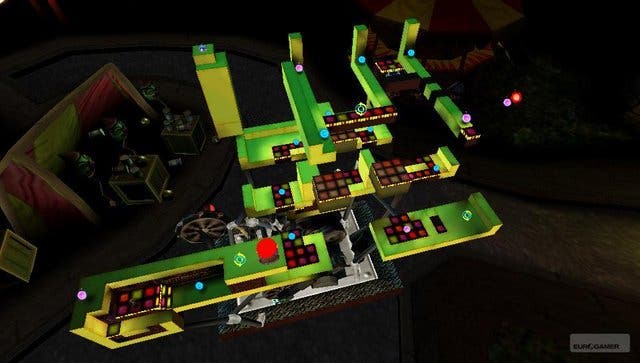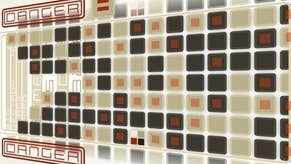Crush
2D or not 2D?
Originality. An uncertain concept when applied to games. Remember when it actually used to be one of the criteria for scores in games mags, alongside that ephemeral spectre, Playability? Most of us claim to crave it, professing boredom with regurgitated sequels and me-too titles that merely ride on the shoulders of last year's big hits. Yet when games come along that actually boast innovative thinking they usually die a brief and merciless death, shunted aside in the sales charts for... regurgitated sequels and me-too titles.
It's enough to make you wonder why developers even bother switching their creative brains on and, it often seems, many of them don't. One day someone will release a first-person driving and shooting sports game in which you must thunder through famous battles of World War II in a customised import sports car so you can take part in the FA Cup Final, and at that point every videogame and console in the world will implode into frozen angel tears, and you'll sink to your knees and unleash bitter cries of sorrow into a dark and unfeeling cosmos.
But, hey, before that dark day comes a-calling, at least we're still getting games like Crush - a puzzler-platformer that takes a Tarantino approach to original thinking, borrowing recognisable elements from several other cult hits but twisting them into something that feels entirely new. Our hero is Danny, an insomniac strapped into C.R.U.S.H, a mad professor's brain machine. This device enables Danny to wander around the landscape of his subconscious, putting everything in order so that he might sink into the fluffy bosom of blissful sleep.

OK. Yes, yes - Psychonauts. It's hard to avoid the initial wave of déjà vu, especially as the quirky art style and sardonic sense of humour from Double Fine's wonderful-yet-undervalued platform classic have also been evoked. While this apparent magpie tendency sends up warning flags, your worries are soon placated. While Crush may doff its cap respectfully in the direction of Raz, this backstory is all but irrelevant to the game at hand. The other notable influence is Super Paper Mario, and its ability to let you flip a 2D platforming world into three dimensions in order to find secret areas and items hidden behind the flat scenery.
Crush takes the basics of this dimension-popping mechanism and expands it into the core of the gameplay, realising its untapped potential in the process. Despite appearances, Crush is very much a puzzle game first and platformer second, and not only can you switch between 2D and 3D viewpoints, doing so actually changes the layout of the level.









